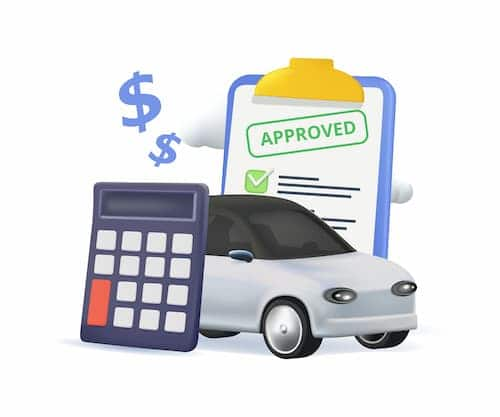How do you compare car insurance to pick the best policy?
Comparing car insurance isn't hard, but it does require a little time and attention to detail.
- Review your current policy. Look at the coverage limits, discounts you're receiving and how much you're paying. Consider how satisfied you are with your current insurer's service.
- Request car insurance quotes. Get at least three quotes, and be sure they all offer the same coverage limits.
- Compare company reputations. Consider financial ratings and complaint ratios in addition to the rates.
- Use up-to-date-information to account for life changes. Events in your life such as moving or marriage will greatly affect what you pay. Make sure you update any changes with your current insurance company and use the correct information when shopping.
- Compare coverages and limits. Look for any differences in the coverage each company offers. Some companies may include extra perks at no additional cost, like roadside assistance.
- Experiment with deductibles. If you have savings to cover it, raising your deductible is an easy way to lower your rates. You should be able to easily get quotes at each deductible level.
- Ask about discounts. Some big savings potential from bundling home and auto policies or enrolling in pay-per-mile plans may not be apparent at first.
- Compare payment plans. Look for discounts when you pay in full. Expect fees if you make payments. Consider what types of payment an insurer will accept.
- Read the fine print. Look for extras or limitations on your policy you need to be aware of.
Review your current policy for coverage and extras
Before you look at quotes from any other companies, take a look at what you currently carry. Do you have state minimum coverage, or are you carrying full coverage? Do you have enough bodily injury liability coverageThis auto insurance coverage helps pay for medical expenses and lost wages if you injure someone in a car accident. It also covers legal fees if you're sued.? What about your property damage liability limit? Can you afford the deductibleThe deductible is the amount you pay out of pocket for a covered loss when you file a claim. you have? Is there other coverage you might want or need?
The cheapest car insurance isn't the best car insurance; it's important to have enough coverage.
Compare company reputations for complaints and stability
You need a car insurance company you can trust to be there for you when you need it. Take the time to look at how the companies you're considering stack up in terms of customer service, claims handling, financial stability and customer complaints.
Look at J.D. Power's best and worst car insurance companies and check on AM Best financial stability ratings. Review the National Association of Insurance Commissioners (NAIC)'s complaint index. If you don't have the time to do all of the research, check out our best car insurance companies list, which considers all of these factors and more to rank the top car insurance companies nationwide.
Request car insurance quotes from multiple companies
Comparing car insurance quotes usually requires only some basic information: Your name, address, make and model of car, previous insurance history and a timeline of past claims and violations.
When you find a quote on a policy you like, you’ll need more specific information to actually buy it.
We recommend you have handy your car’s vehicle identification number (VIN), your driver’s license number and those of any other drivers on the policy.
If there have been changes in your life since the last time you shopped around, make sure they are reflected in your new quotes.
For example, getting car insurance after marriage or buying a house usually mean cheaper rates, because married people and homeowners tend to file fewer claims. You may have added a teen driver to the household. Or you may have moved to a new ZIP code, which can change what you pay radically.
Compare current coverage and limits with available options
Make sure to compare auto insurance quotes for the same type and amount of coverage.
A good way to start is with your current policy’s declarations page, which lists the types of coverage you have, your deductibles and limits and your premiums you pay for each.
Ask yourself the following questions:
- Are the liability insurance limits on your policy enough to protect your home, savings and other assets if you were at fault in an accident?
- Do you need full coverage car insurance? If you have a loan or lease, you need to keep the coverage. However, if you have an older car you own outright, consider whether the expense is worth it.
- Do you have good health insurance, or would it be costly if you were injured in an accident? Consider adding or increasing personal injury protection coverage, if you live in a state where it's available to you.
- Could you afford repairs or medical bills if an uninsured or underinsured motorist struck you? Uninsured/underinsured motorist coverage will cover the costs.
Compare your deductible options
Car insurance deductibles on your collision and comprehensive coverages are one of the best means you have of influencing the rates you see.
Most car insurance claims are small. When you choose a higher deductible, you are assuming more of the risk of paying those claims.
We recommend you choose an amount that you can pay from savings or are confident you can scrape together. Your car won’t be repaired until you pay your share.
Compare discounts and how much you can save
Car insurance discounts are a way to save big on car insurance, upwards of 25%. Make sure you know what's available.
A company that sells both auto insurance and home insurance wants you to buy both. If your family has more than one car, it wants to insure them all. Since the company wants to sell you multiple policy types and multi-car policies, they'll give you a discount.
Auto and home insurance bundle and multi-car insurance discounts can give you a substantial discount on your rate.
A slightly more expensive premiumThe payment required for an insurance policy to remain in force. Auto insurance premiums are quoted for either 6-month or annual policy periods. from an insurance company that can bundle your auto and home coverage might be cheaper once the discount on both policies is applied.
If you have a teen in the household, the company with the more generous good student discount might be less expensive after the discount is applied.
Almost all companies that offer “pay-as-you-drive” plans, such as Progressive's Snapshot will offer you a 5% discount just for enrolling after you buy a policy. Later, after you have installed a monitoring device, the discounts can range from nothing to as much as 50%. These plans can pay off if you are a very cautious and extremely low-mileage driver.
Compare payment plans for convenient billing
Almost all carriers offer the option of payment plans. Typically you will need a car insurance down payment to start your coverage. After that, you can pay monthly. There may be a fee associated with this form of payment.
Not all carriers accept all forms of payment. Consider whether you will pay by:
- Check or money order
- Bank bill pay
- Electronic funds transfer (EFT) – automatic online payment
- Credit card
- Debit card
Conversely, you can expect a discount for payment in full, usually 5 to 10%.
Compare the fine print so you don't miss anything
Make sure you know what's covered and what's not in your policy. Look for anything that stands out; some companies add extra coverage for free, like coverage for pet injuries or roadside assistance. Make sure you note anything that differs in the standard policies so you know exactly what you're getting for your money.
You should also look for limitations and exclusionsItems that are specifically denied coverage under the terms of an insurance policy. For example, most auto insurance policies exclude coverage for normal wear and tear, drag racing and intentional acts., like who can drive your car and if you're covered when driving a rental car.
There's really no limit to how often you can shop around for car insurance, but once a year is a good standard to ensure you're getting the best price.
![]()
Compare car insurance companies with our easy tool
If you're ready to compare car insurance companies, we can help. We've created an easy-to-use tool to help you look at auto insurance companies side by side.
Before you start the process of requesting quotes, narrow your choices by looking closely at the options available to you.
People ask
What is the fastest way to compare car insurance?
The fastest way to compare car insurance rates is to request multiple quotes online. Alternatively, you can work with an insurance agent to gather quotes on your behalf.
How to compare car insurance: A step-by-step example
To help explain all of the steps, let's take look at the example of a 30-year-old married woman we'll call Selena.
Selena's car insurance is up for renewal, and her rates have gone up. She wants to find a better rate, but to make sure she has adequate coverage for her new car. Here are the steps Selena followed:
- She reviews her current car insurance policy and finds that she has the following coverage, for which she pays $1,800 a year:
- 50/100/50 liability limits
- Uninsured/underinsured motorist coverage at 50/100/50
- Personal injury protection of $10,000
- $1,000 deductibles for collision and comprehensive coverage
- Rental reimbursement
- She considers whether the coverage is adequate. Having just purchased a new home, Selena decides she wants higher liability coverage to protect her investment. She decides to request quotes with liability limits of 100/300/100, but keeps the other coverages the same.
- Selena requests quotes from three local companies. She receives the following quotes:
- Company 1: $2,100
- Company 2: $1,500
- Company 3: $1,250
- Selena reviews each quote to consider what coverage is included. She finds that Company 2 includes roadside assistance in the quote, adding value for a lower price. However, Company 3 still offers a better rate.
- She looks at each company's reputation, using J.D. Power and AM Best ratings. She finds that while Company 3 has the best rate, it doesn't have a good reputation for claims handling. Companies 1 and 2 both have great reputations.
- Sarah contacts Company 2 and asks if there are any additional discounts for which she might qualify. When she tells the representative she's a teacher, she earns a discount, dropping the rate to $1,400 a year. The representative tells her that she can lower her comprehensive and collision coverage deductibles to $500 and still pay less than her current rate. The new rate is $1,550.
The result: Sarah chooses Company 2. She will pay less for car insurance and get roadside assistance and lower deductibles.
People ask
Will comparing car insurance quotes affect my credit score?
No. Although credit is a component of insurance pricing, it is a soft credit check and doesn't impact your score.
Which car insurance companies should you compare?
There are a few things to consider when choosing auto insurance companies to compare.
- The company's history of complaints; the NAIC keeps records.
- The company's financial stability; AM Best is the most common choice for insurance company financial strength. A score of A or better is preferable.
- The company's reputation for customer service and claims; J.D. Power's annual survey covers both.
FAQ: How to compare car insurance
How can you get the best car insurance rate?
To get the best car insurance rate, keep a clean driving history and good credit score. Shop around and compare rates from multiple companies.
Why is it important to compare auto insurance quotes?
Rates vary widely between insurance companies. Comparing quotes will ensure you find the best price.



